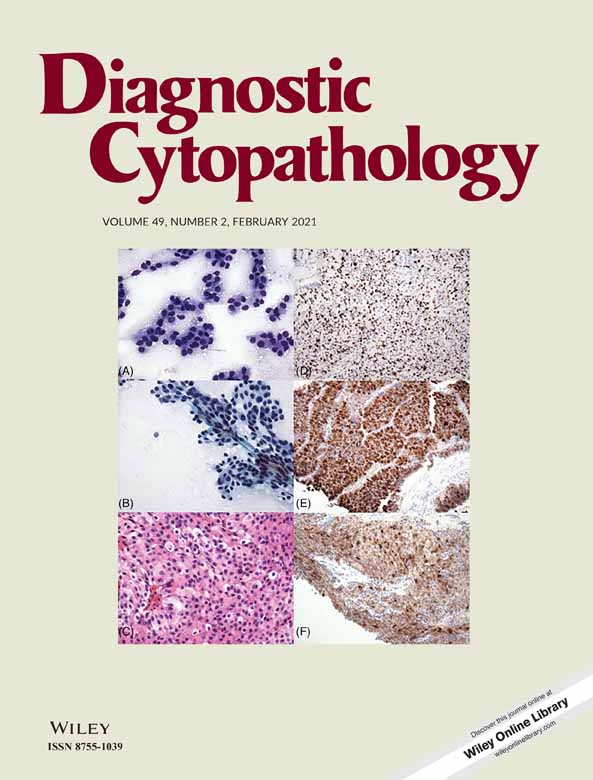The cytopathological spectrum of lymphomas in effusions in a tertiary center in Taiwan
Background
Lymphomas presenting in effusions could either be primary or secondary, with very limited data from Taiwan.
Methods
We retrospectively reviewed effusion lymphomas from our archives in a tertiary center from July 2011 to June 2019.
Results
We identified 59 specimens from 43 patients, including 7 cases with primary effusion lymphoma (PEL) and 36, secondary effusion involvement. Half of the secondary cases presented concurrently with effusion lymphoma, while the remaining half-experienced effusion lymphoma during disease progression. All patients with PELs were males with a median age of 77 and presented with massive pleural effusion. None was HIV-related. Two (29%) PEL cases were positive for human herpes virus 8 (HHV8). The only case with plasmablastic phenotype in the PEL group was positive for both HHV8 and EBV. Four patients died shortly after diagnosis; while the remaining three were alive at the last follow-up (two at 13 months and one at 99 months). Of the secondary cases, diffuse large B-cell lymphoma/high grade B-cell lymphoma was the most common (n = 16, 44%), followed by mantle cell lymphoma (n = 5, 14%). Only 8 cases (22%) were T-cell neoplasms. Prognosis for patients with secondary effusion involvement was dismal, with 1- and 2-year overall survival rates at 17% and 8%, respectively.
Conclusion
We found a wide cytopathological spectrum of effusion lymphoma in Taiwan. Most of our PEL cases were distinct from that defined in the World Health Organization scheme by a B-cell phenotype, HHV8-negativity, and absence of immunodeficiency. As compared to PEL cases, the prognosis of those with secondary involvement was extremely poor.
CONFLICT OF INTEREST
The authors declare no potential conflict of interest.
Open Research
DATA AVAILABILITY STATEMENT
Data available on request from the authors.




